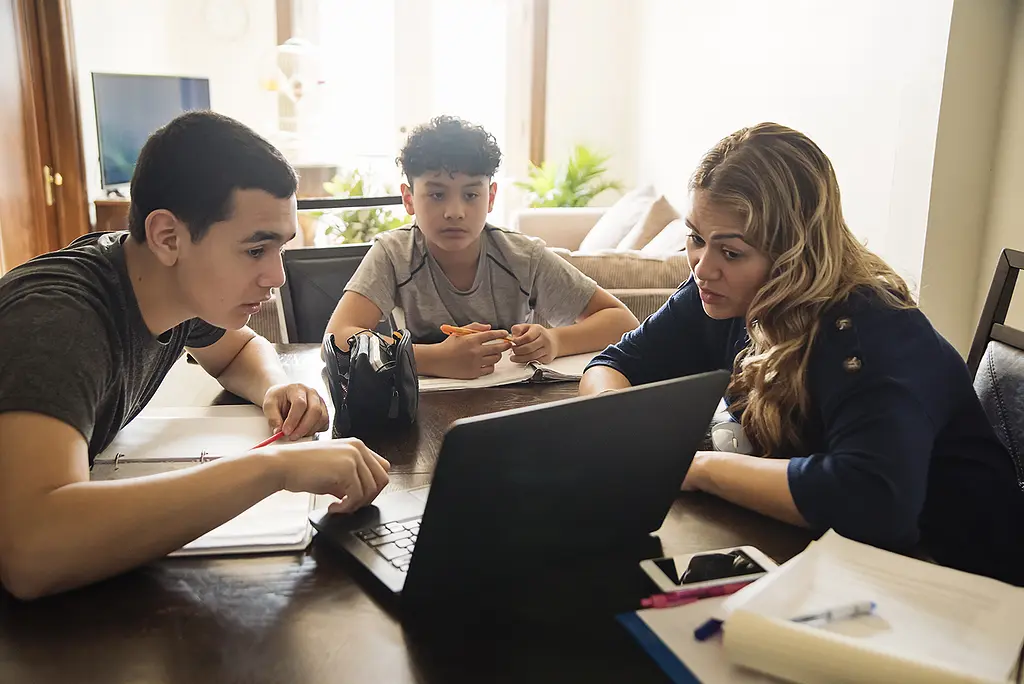As of the writing of this post, the COVID-19 pandemic has tallied more than 200,000 deaths and is still rising. Many are still trying to navigate what this new normal will look like going forward, especially for the millions of children that have been out of the classroom for at least 6 months. The majority of the K-12 school districts in the US have implemented their reopening plans for the Fall term: remote or hybrid learning with the expectation of slowly transitioning students back into classrooms. This has sparked critical conversations nationwide amongst public health experts, school staff, and parents. As policymakers and public health officials devise solutions based on their regional circumstances, it is the low-income students that may be the most impacted from these decisions.
Student outcomes outside of the classroom
Time away from classroom instruction and school closures is predicted to exacerbate summer learning loss. Summer learning loss is a phenomenon where students start the academic year with achievement levels lower than where they were at the beginning of summer break. Recent study shows that the average student loses between 17 and 28 percent of school-year gains in English language arts and 25 and 34 percent in math during the summer depending on grade level. Summer learning loss is also a significant driver of achievement gaps for low-income students and the high school dropout rate. For some perspective, a longitudinal study showed that more than half of the gap in reading scores between low-income 9th graders and their middle-income peers could be attributed to differences in summer learning accumulated between first and fifth grade. This kind of unprecedented setback can potentially and disproportionately widen the achievement gap.
As school districts look to replace classroom instruction with distance learning, former Secretary of Education John King Jr. argues that “even in places that do distance learning well, we can expect that students will lose significant ground.” This is backed by studies that have shown that students have worse learning outcomes in full time online learning when compared to in-class instruction. In addition to the widening achievement gap between lower income students and their counterparts, schools also have to contend with the fact that 17 percent of U.S. students do not have access to computers at home and 18 percent do not have home access to broadband internet, which roughly equates to 3 million according to The Associated Press.
Environmental impact and risk of abuse during distance learning
The environment in which students learn can also be an obstacle. In a letter sent to Chancellor Richard Carranza of the New York City Department of Education, various advocacy groups explained how challenging distance learning will be for students who lack permanent housing and are in need of adequate space to learn. For context, the National Center for Homeless Education estimates that 1.36 million students experienced homelessness during the 2016-17 school year. They also reported a strong linkage between homelessness and academic outcomes—64 percent of homeless students graduated in the 2016-17 school year, which was 13 percentage points below other low-income students and 20 percentage points below all students.
For many, school is a safe haven that provides strong support systems of teachers and peers. With schools, daycare centers and camps closed, teachers and counselors worry about potential abuse and neglect in the homes of students who they can no longer monitor closely. States such as New York have reported a 51 percent decline in child abuse cases during the pandemic, but this could mean that cases are going unreported as teachers normally make the most calls to child abuse hotlines. In the U.S., rates of child abuse and neglect are five times higher for children in families with low socioeconomic status compared to children in families with higher socioeconomic status, according to Substance Abuse and Mental Health Services Administration. And as families continue to face increased stress levels due to the prolonged economic burdens, the risk of physical abuse and neglect may also increase.
Responding to the challenges of distance learning
These are just some of the issues policymakers are grappling with as many schools are engaging with some form of distance learning. Providing support and resources to students, teachers, and administrators has never been more important than now, especially for the schools that lack funding. Some districts are addressing resource allocation issues by either sending iPads to students who don’t have computers or partnering with internet service providers to expand internet access. Research organizations such as RTI International’s Center for Education Services have partnered with educators and schools in transitioning into virtual and blended learning environments that facilitate success for all students in every engagement. There are also various nonprofit organizations that are involved in closing opportunity gaps for students of color, raising achievement levels, and providing access to high-quality educational materials.
Policymakers will need to address funding gaps through equitable school financing, a research-backed mechanism in which funding and grants are allocated to support the needs of low-income students in order to improve range of student outcomes. Historically speaking this has been an uphill battle but considering how the pandemic has brought to light the societal vulnerabilities, there may be a new sense of urgency. “It’s really up to us,” claims John King Jr. “It's a question of, do we have the political will to invest the resources to make sure that we don't lose a generation?”

